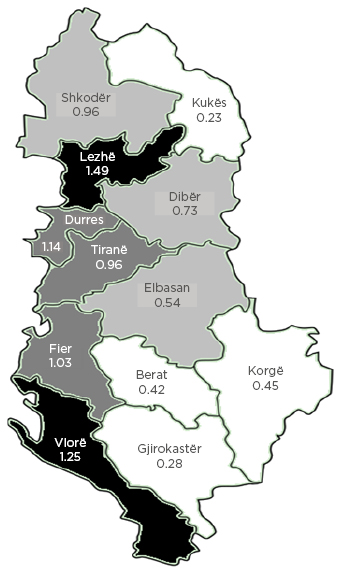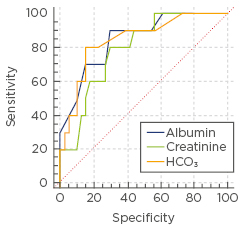Leptospirosis is an endemic zoonosis that is encountered more frequently in warm and tropical areas; Albania is considered to be an endemic zone.1 Acute kidney injury (AKI) is one of the most serious complications associated with this infection. The severity of AKI is closely related to mortality in this context.2,3
Therefore, we investigated 119 consecutive adult patients diagnosed with leptospirosis from 2010– 2015 and treated in a tertiary referral centre. The map in Figure 1 shows the distribution of leptospirosis in Albania, which will help in structure better preventive public health measures. The majority of patients came from the western areas on the Adriatic coast.

Figure 1: The distribution of leptospirosis in Albania.
In our study, 95 patients developed different degrees of AKI during the course of the disease. Patients were statistically analysed to identify predictors of oliguric-AKI. Patients were classified into two groups: oliguric (18 patients; 18.9%) and non-oliguric (77 patients; 81.1%). Receiver operating characteristic (ROC) curve analysis identified albumin level (area under the curve [AUC]: 0.854; cut-off value ≤2.7 g/dL; sensitivity 90%; specificity 71.1%), serum creatinine (AUC: 0.769; cut-off value ≥3.84 mg/dL; sensitivity 83.4%; specificity 64%), and HCO3– (AUC: 0.769; cut-off value ≤18.4 mmol/L; sensitivity 68.7%; specificity 79.1%) (Figure 2).

Figure 2: Receiver operating characteristic curve comparison.
In our study, hypoalbuminaemia, elevated serum creatinine, and low serum levels of HCO3, were indicators for oliguric-AKI in leptospirosis upon admission. The evaluation of such simple tests in patients with leptospirosis can help a physician determine early risk for the development of oliguria.







